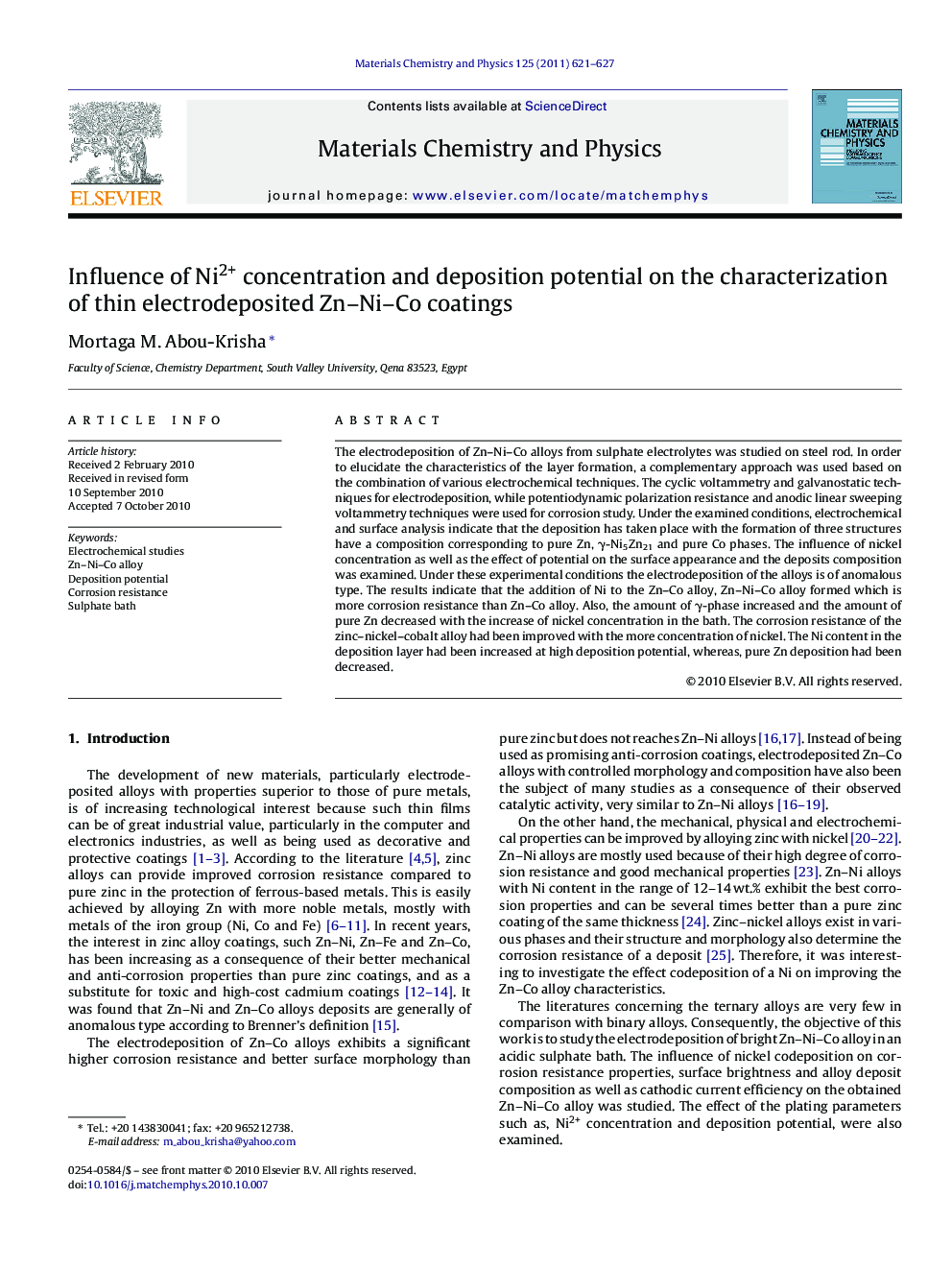| Article ID | Journal | Published Year | Pages | File Type |
|---|---|---|---|---|
| 10638124 | Materials Chemistry and Physics | 2011 | 7 Pages |
Abstract
The electrodeposition of Zn-Ni-Co alloys from sulphate electrolytes was studied on steel rod. In order to elucidate the characteristics of the layer formation, a complementary approach was used based on the combination of various electrochemical techniques. The cyclic voltammetry and galvanostatic techniques for electrodeposition, while potentiodynamic polarization resistance and anodic linear sweeping voltammetry techniques were used for corrosion study. Under the examined conditions, electrochemical and surface analysis indicate that the deposition has taken place with the formation of three structures have a composition corresponding to pure Zn, γ-Ni5Zn21 and pure Co phases. The influence of nickel concentration as well as the effect of potential on the surface appearance and the deposits composition was examined. Under these experimental conditions the electrodeposition of the alloys is of anomalous type. The results indicate that the addition of Ni to the Zn-Co alloy, Zn-Ni-Co alloy formed which is more corrosion resistance than Zn-Co alloy. Also, the amount of γ-phase increased and the amount of pure Zn decreased with the increase of nickel concentration in the bath. The corrosion resistance of the zinc-nickel-cobalt alloy had been improved with the more concentration of nickel. The Ni content in the deposition layer had been increased at high deposition potential, whereas, pure Zn deposition had been decreased.
Related Topics
Physical Sciences and Engineering
Materials Science
Electronic, Optical and Magnetic Materials
Authors
Mortaga M. Abou-Krisha,
